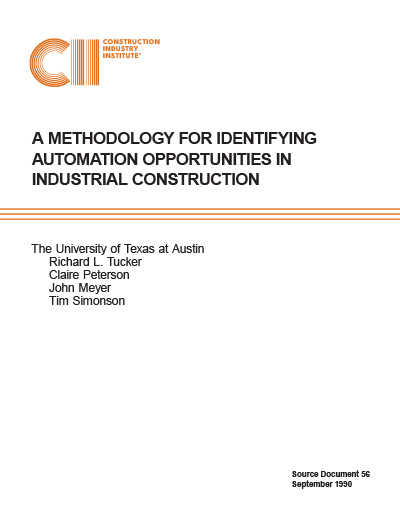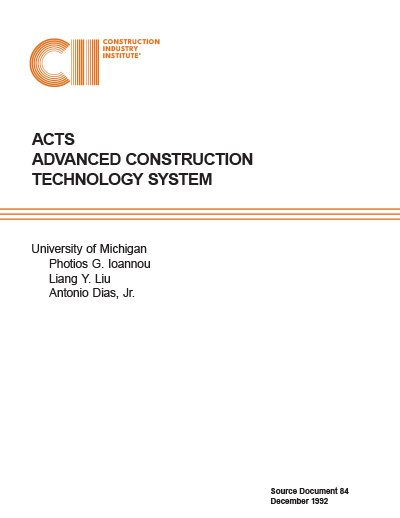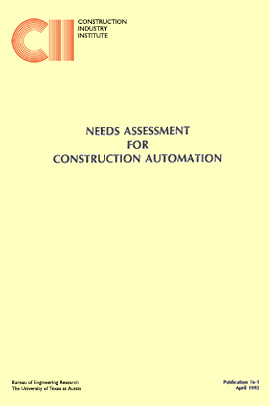
A Methodology for Identifying Automation Opportunities in Industrial Construction
The Construction Industry Institute (CII) Advanced Technological Systems Task Force was created to research the possibilities for implementation of automation technology, or robotics, in the construction environment. This particular research effort focused on the identification of construction tasks which might prove to be most receptive or in need of automation technologies.
The identification of tasks was accomplished by developing and implementing a methodology within three areas of construction: piping, electrical, and structural steel. The methodology emphasizes field data collection and analysis of subjective factors which are relevant to the purpose. Input for this research was received from management and field personnel on selected construction sites and also from the members of the ATS task force. The field data collections were performed by John Meyer, Claire Petersen, and Tim Simonson.
Conclusions
One conclusion reached from the field research is that many of the construction workers are flexible and creative in the performance of their duties. This is understandable considering the obstacles that are typically encountered on any construction site: lack of proper materials and equipment, rework, and field-run construction. While perhaps distrustful of the concept of automation in their work environment, they were receptive to anything that would actually help them perform their workload. Overall, the quantitative research findings are in agreement with past research which estimates the average amount of idle time for each worker to be 25-30%.
The tasks which were determined by this research to be the most in need of and/or receptive to automation are listed. Beneath each listing of the individually top ranking tasks are task groups which are termed Cycles. These cycles are related by sequence and therefore considered to be candidates for the most efficient automation technology. Definitions of these tasks are found in Chapters 4, 5, and 6, respectively.
In general, the type of tasks that are most common to all three areas are lifting, aligning, and connecting. Whether engaged in fabrication or erection activities, above grade or at grade, these three types of tasks represent a majority of worker time.



